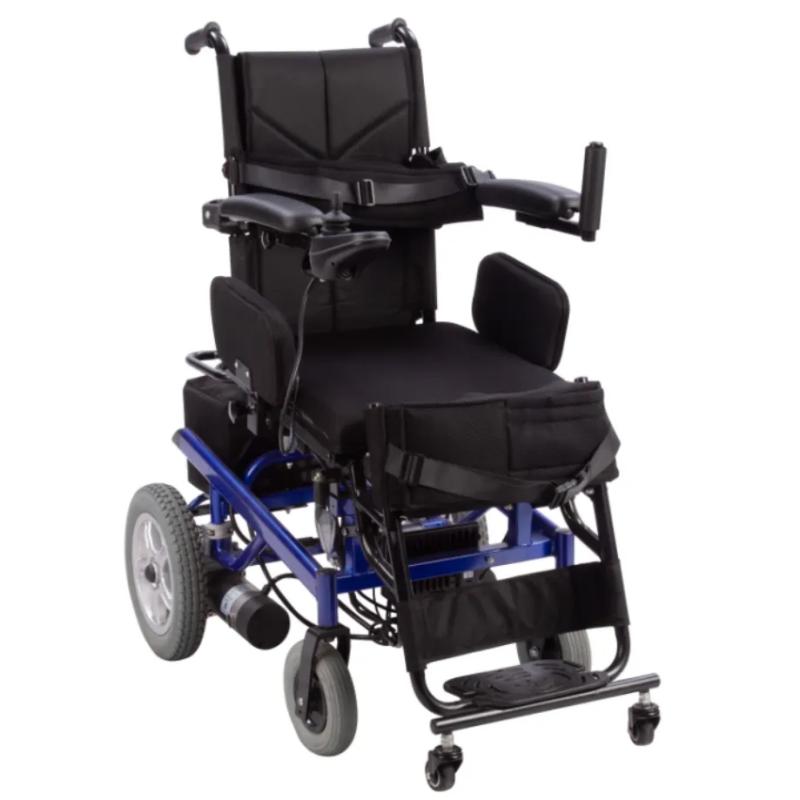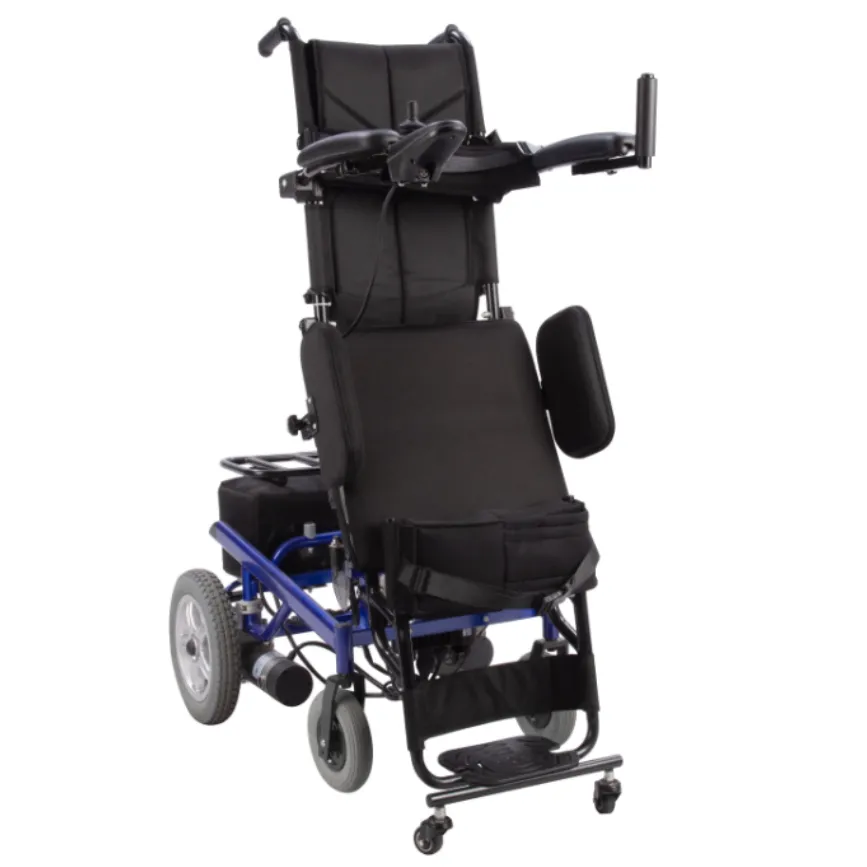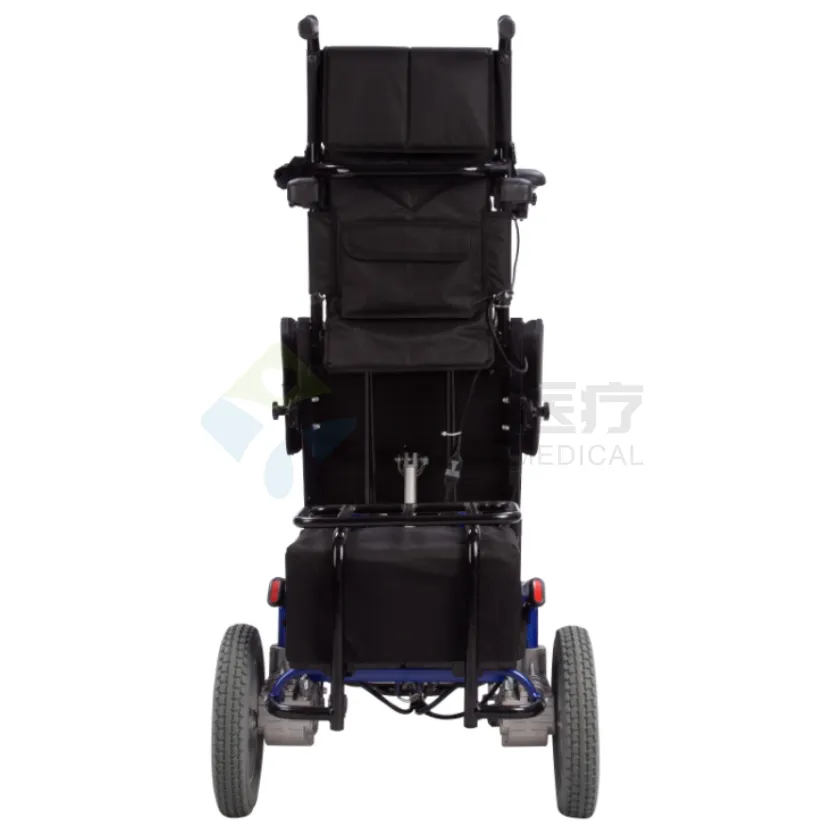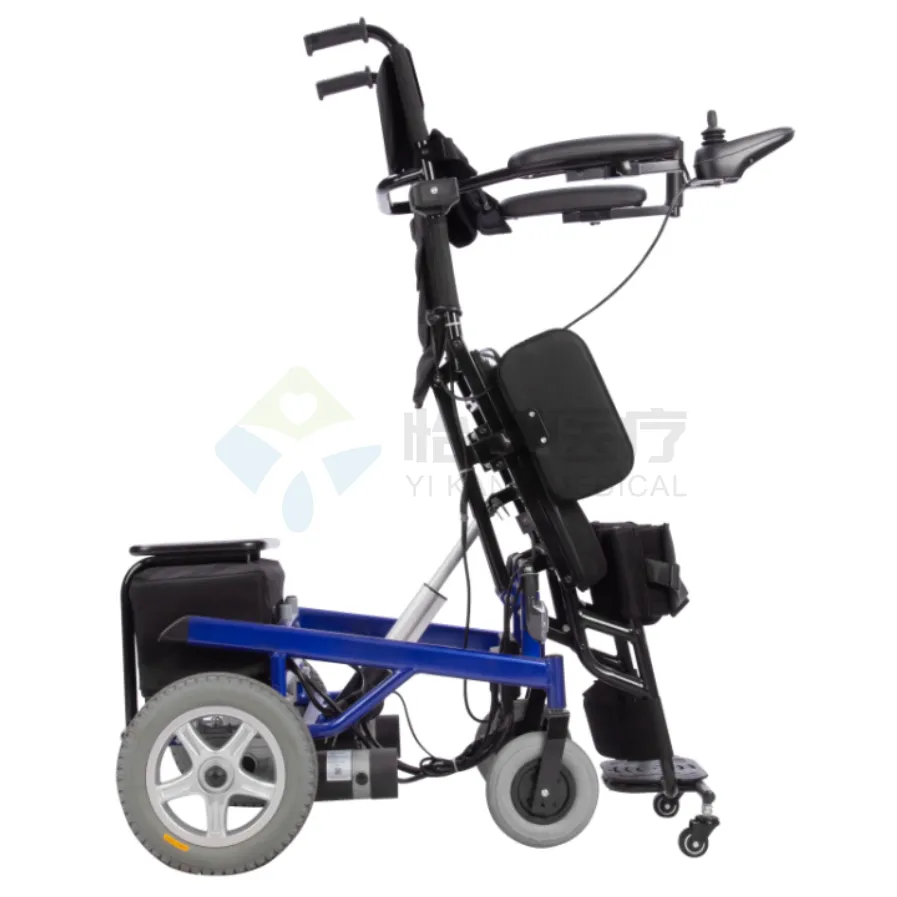In the modern rehabilitation assistive device market, "electric wheel chairs" and "scooters" are two popular means of transportation, providing substantial mobility solutions for people with limited mobility. However, in terms of use, the public, especially the elderly and their family caregivers, often hesitate between "electric wheel chairs" and "scooters". Which one is more suitable for daily use? Why do more and more users prefer "electric wheel chairs"?
This article will analyze "electric wheel chairs" and "scooters" in detail from multiple perspectives such as structural function, applicable population, control method, comfort, flexibility, indoor and outdoor versatility, and safety assurance, and explain "why electric wheel chairs are better than scooters".

What are electric wheel chairs?
Electric wheel chairs are an electrically driven mobile device designed for people with mobility impairments, mainly composed of an electric motor, a battery system, a controller, a frame, a seat system, and a wheel set. The characteristics of electric wheel chairs are:
● Users can independently control forward, backward and steering through handles, rockers, etc.;
● Usually have a more compact body structure;
● Can achieve efficient movement in narrow spaces;
● Designed for the disabled and those with long-term mobility difficulties as the main users.
What is a mobility scooter?
A mobility scooter is an auxiliary means of transportation that looks like a small electric car. It usually has a three-wheel or four-wheel structure, a steering handle, a seat and a larger body space. Its main characteristics are:
● Users are required to have certain sitting posture control and operation capabilities;
● The operation method is similar to that of a scooter;
● Commonly used for short-distance movement in large outdoor spaces or shopping malls and communities;
● Suitable for users with mild mobility difficulties or older people who still have certain mobility capabilities.
It is not difficult to find from the above definition that although power wheels chairs and mobility scooters have overlapping functions in some scenarios, there are fundamental differences between the two in terms of design intentions, applicable objects, structural volume, etc.

Why are power wheels chairs better than scooters in terms of functionality?
Functionality is the core criterion for measuring the quality of travel tools. In this dimension, power wheels chairs show more comprehensive and efficient characteristics than scooters.
1. More precise control system
Power wheels chairs are generally equipped with a precise five-way joystick control system, and users can achieve all-round movement with just a slight finger movement, including turning on the spot, smooth acceleration and deceleration, etc. This high-sensitivity design is very suitable for users with limited upper limb strength or reduced hand flexibility.
In contrast, scooters usually use motorcycle-style steering handles, which require both hands to hold and turn the handles to control the direction. The control accuracy is relatively low, especially in small spaces or indoor environments. The control experience is obviously not as good as power wheels chairs.
2. More suitable for indoor environments
Power wheels chairs have a smaller turning radius (usually less than 80 cm), which can easily travel through indoor environments such as corridors, kitchens, and bathrooms. The body width of power wheels chairs is also narrower, making it easier to pass through door frames and furniture gaps.
The mobility scooters are mostly designed for outdoor use, with wide bodies and large turning radius (usually over 1.2 meters), which are not suitable for high-frequency shuttles in environments such as homes or hospitals.
3. Higher posture adjustment capabilities
Many mid-to-high-end electric wheel chairs have a variety of electric adjustment functions, including electric tilt, backrest angle adjustment, footrest lifting, etc., which help users reduce the pressure of sitting for a long time and promote blood circulation. This is of great significance in long-term use.
Mobility scooters are mostly fixed seat structures, only have forward and backward sliding, lack electric adjustment functions, and are not suitable for users who need to rely on sitting support for a long time.

Electric wheel chairs are more widely applicable
In addition to functional performance, electric wheel chairs are also better than mobility scooters in terms of applicability.
1. Serving people with severe mobility disabilities
Power wheels chairs can serve users who have completely lost the ability to walk, including lower limb paralysis, stroke sequelae, amputees, etc. Many power wheels chairs also support head control, chin control or breathing control technology, so that highly disabled people can also achieve self-mobility.
The mobility scooter requires the user to have good sitting stability, upper limb operation force and a certain balance ability, and is not suitable for severely disabled people.
2. Suitable for older users
Due to its easy operation, flexible turning and controllable speed, power wheels chairs are more suitable for elderly people with reduced physical strength and cognitive impairment, especially those over 80 years old.
Although mobility scooters are also aimed at elderly users, their operation method is more similar to that of transportation, which requires higher reaction and attention, posing a challenge to some older users.
Power wheels chairs are more flexible and portable
In terms of mobility convenience, power wheels chairs also have obvious advantages.
1. Foldable/modular design
Most electric wheel chairs currently support quick folding or modular disassembly, which is convenient for users to put them in car trunks, elevators, trains and other transportation tools, improving the flexibility of daily travel.
Although mobility scooters also have folding models, they are usually heavier and cumbersome to disassemble and assemble due to their large size and complex structure, making them unsuitable for frequent transportation.
2. Stronger urban traffic capacity
Due to its small size, detachable battery, and small turning radius, electric wheel chairs can flexibly cope with scenes such as urban sidewalks, elevators, and public places, and are not easily restricted.
Mobility vehicles are often restricted in urban environments, such as being prohibited from entering subways, being unable to accommodate elevators, and being unable to go up and down high steps, which reduces the actual traffic efficiency.
Power wheels chairs have more advantages in safety and control stability
The safety of travel aids has always been one of the core elements that users pay attention to. Power wheels chairs have stronger safety protection mechanisms in many aspects.
1. Low center of gravity design to prevent rollover
The overall center of gravity of power wheels chairs is low, and the seat is set above the center of the main wheel axle. With multiple protection systems such as anti-rear rollover and anti-rollover brackets, rollover or tilting accidents can be effectively prevented.
Mobility vehicles have a high body and a forward center of gravity, especially when turning and going uphill, there is a certain risk of rollover or instability.
2. High-precision braking system
Power wheels chairs are usually equipped with an electromagnetic braking system, which can brake quickly even when the power is off. Some models support the "hill descent" function, which can automatically maintain stability on slopes.
The brake system of mobility scooters mostly relies on mechanical operation, which is slightly inferior in response speed and stability, and the brake system of some low-end products is prone to loosening after long-term use.

Why are electric wheel chairs better than mobility scooters?
In summary, "electric wheel chairs" are better than "mobile scooters" in many core performance dimensions. The following table summarizes the core comparison:
| Project | Electric wheel chairs | Scooters |
| Control method | Five-way joystick, one-hand controllable | Hand-operated handlebars, complex to operate |
| Turning radius | Small (<80cm), indoor-friendly | Large (>120cm), not suitable for indoor use |
| Applicable population | Severe mobility impairment to mild elderly | People with mild mobility impairments |
| Posture adjustment function | Supports tilt, lift, multi-position adjustment | The seats are mostly fixed |
| Folding portability | Modular design, easy to carry | Heavy, inconvenient to carry |
| Safety protection | Low center of gravity, smart brake | Limited brake stability |
| Urban traffic capacity | High | Limited |
Therefore, in terms of meeting a wider range of use needs, improving user comfort, improving safety and control convenience, electric wheel chairs are obviously better than scooters. This advantage is not only reflected in the design concept, but also in every detail in the actual use process.
When faced with the question of "choose electric wheel chairs or scooters", the answer is not simply "more expensive and better" or "bigger and more stable". Electric wheel chairs have become a more suitable solution for people with mobility impairments due to their sophisticated design, diverse functions, adaptability to a wide range of people, flexible control and space compatibility.
Are Yikang Medical’s products certified for international markets?
Yes, all our products at Foshan Yikang Medical Technology Co., Ltd are certified with ISO13485, ISO9001, CE, and FDA. These certifications demonstrate our commitment to high-quality manufacturing processes and ensure that our hospital beds, power wheels chairs, and other medical products meet stringent international standards.
Our factory is equipped with advanced production capabilities, allowing us to offer customized and affordable solutions to meet the needs of our clients worldwide.

